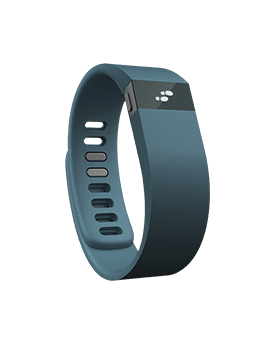Dawn Of A New Digital Reality
 We’re at the dawn of a new industrial revolution. And just as the steam engine and the spinning jenny transformed the world in the first industrial revolution, the new technology of this new industrial revolution will transform our world as we know it.
We’re at the dawn of a new industrial revolution. And just as the steam engine and the spinning jenny transformed the world in the first industrial revolution, the new technology of this new industrial revolution will transform our world as we know it.
The seeds of revolution are all around us: More compute power now resides in each of our pockets than in the supercomputers of the eighties; we are rapidly approaching a point where each person on the planet is interconnected through a web of digital channels; billions of devices are capable of instantly uploading data about the device and its environment as an the internet of things; highly automated manufacturing plants will soon intelligently assemble custom products; and instant video communications now take place regularly around the world. All of these changes are already here.
But the really big changes are only just starting. The modern equivalent of the steam engine is the internet-connected digital sensor. It’s in our pocket, on our wrist, in our cars, toothbrushes, scales, kitchens,and luggage tags; and soon even our medicine. Those billions of interconnected devices are about to multiply into tens of billions. In the not too distant future, every object will have a sensor connected to the internet. Look around and you can see it today in devices like the Nest smoke detector that not only keeps you safe, but will also alert you of problems at home when you are away.
Consider a world in which every object we use has a web-connected sensor able to control and monitor anything we desire. The pill we take when we are sick that has a sensor in it powered by the acid in our stomach – it sends a signal to precisely log where and when you took the pill – but why stop there … it will also note the specific body chemistry signals in your mouth and gut to provide real-time data that sophisticated algorithms will use to predict your health and recommend your dietary intake for the next 24 hours. (I’m already seeing great hangover cures).
Although some people are fearful of privacy implications of subcutaneous sensors that monitor our vital signs, we’ve already gladly surrendered our privacy to Facebook just to be able to share things with friends. I’m pretty sure each of us would gladly give up a share of privacy in return for never getting ill or even extending life by months or years. Embedded sensors will revolutionize healthcare by making it far cheaper to keep us healthy – without going to a doctor – than to fix us once we are broken. The gamification of health is already moving us in this direction thanks to wearable devices like Nike Fuelband and Fitbit.
While it’s fun to imagine the changes coming in our personal lives, the real indutrial revolution will happen in the workplace. Over the past 150 years we have designed our organizations to operate efficiently in an analogue world – a world in which products and paper are moved along a value chain. Our organizations are designed to push products and services toward an ignorant consumer. The new digital reality is that business is no longer linear. B2B and B2C differentiation becomes meaningless as all business become P2B – people to business – where communities of people resemble hyper-intelligent sourcing networks. And in response, sensor-enabled businesses will dynamically shape and reshape the products and services they supply, mimicking our brain’s response to nerve signals received from its network of sensors. To compete in this new digital paradigm, we must rethink business; transforming it to operate in this hyper connected digital value-network. This is our new digital reality.
To survive, large organizations of today must adapt and change fast enough to avoid being displaced by agile startups born into this new reality. As a business leader, the question you need to ask yourself is this: "Is my organization ready for this new digital reality?"
Have I piqued your interest?
If so, I encourage you to join our research panel and learn the secrets of the new digital reality before your competitors.
Next post: 5 Steps to transform IT from Order-taker To Business Partner: Part 2
Previous post: Technology + Philanthropy = A Masterclass In Technology Marketing At Dreamforce 2013